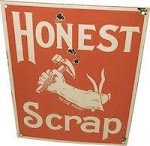A quick recap-
“History of Civilization in Andaman”
“Chequered History of Civilization”
Now, dear friends, the haunting unfinished script about the chequered history of civilization in Andaman continues ahead-
JAPANESE OCCUPATION – MARCH 23, 1942
The Japanese take over the Islands in the early hours of March 22. And another saga of human sufferings and endurance starts unfolding.
Reign of terror would be an understatement for the three-and-a-half year ordeal that the left out people had to undergo during the Japanese regime.
First, as is customary, the invading army plays havoc with the masses to create psychological pressure into subjugation. Individual houses were raided and cash, ornaments, automobiles and other valuables looted. Even good cloths were not spared. Thereafter the cattle, goats and fowls were taken away.
In such an incident only Zulfiqar Ali (incidentally, my father-in-law’s own maternal uncle) pulled his gun on a Japanese soldier. But he was overpowered and executed in public at Netaji Ground (presently at Aberdeen Bazaar in Port Blair). His tomb till date tells the tale to anyone who cares to listen.
There was acute shortage of food. The Japanese soldiers suffered equally badly. The local people were put to hard work to raise sweet potato, tapioca and other edible crops. The local inhabitants were put to the ignominy of spraying human excreta as organic manure. They were producing for the Japanese soldiers but they themselves were going hungry. Clothes had become a luxury. People used gunny bags for clothes, had to eat yam and other leaves and barks. There was no sanctity of life.
As the weeks and months progressed the old and infirm became a liability on the new masters. They were rounded up, put in a vessel, taken to Havelock Island, and thrown overboard to drown and die. The lone survivor of the incident, who later came to be known as ‘Saudagar’ is reported to have eaten human flesh for survival.
Incidentally, he stayed for the rest of his life up to 1994 beside the mosque in the neighborhood of the quarter that we stayed in at Supply Line, Port Blair, while my father was operating as an Assistant Secretary in the A & N Administration. Hence, we children had ample opportunities to interact with him and hear the details of his ghastly experience from the horse’s mouth. I shall share the details in my ensuing posts.
Meanwhile, the British were targeting every ship that tried to approach the port with pin-pointed precision. The Japanese military administrators had a nagging feeling that somebody was spying for the British. They tried to catch hold of the spy. In the process, the old human weakness took its toll. Those who were close to the Japanese started naming those they had an account to settle with. It started a chain reaction. One would name the other to save his skin.
| A shiver runs through the spines of those who underwent the torture in the hands of the Japanese just at the mention of those days. Their fingers do not grow normal nails till date. Red hot pins were forced under their nails. Knee, shoulder, elbow joints used to be hit with rods, testicles were crushed, penis burnt with cigarette butts. |
Incidentally, one such victim of the Japanese’ inhuman treatment was Dr. Fred Meshack, my own grandfather-in-law, who was one of the very first veterinary surgeons of the Islands and a citizen of noble repute. He was also taken into their dreaded custody on suspicion of spying for the British and tortured atrociously by piercing his nails with red hot pins. Fortunately, my grandfather-in-law was soon released due to lack of any evidence against him, whatsoever.
The process went on and on and on. Public executions were held at Duggnabad and Humphreyganj.
Educated male members of the society had to suffer the most. Those who were the cream of the society became paupers. Their gold, ornaments, cash, cattle – everything was snatched away by the Japanese. No one has ever tried to fathom the pain, the agony, the sufferings, the deprivation and the sacrifice made by this small population of 11,000 people.
1945 – BRITISH RE-OCCUPATION
The Nuclear holocaust caused by atom bombs dropped at Hiroshima and Nagasaki crushed the Japanese dreams of a trans-national empire. The Japanese forces surrendered before the British on October 08, 1945 at Andaman Club near Gymkhana ground. When the British Government reclaimed the Islands in 1945, those lucky ones who survived the ordeal were only a shadow of their previous selves. A devastated lot of unfortunate people who had to start everything from scratch again! Like those in 1858.
1946 – 47 – INDIAN INDEPENDENCE
The British Government wanted to retain Andaman and Nicobar Islands under the Crown. Pt. Jawaharlal Nehru strongly argued that the Islands should go to India as the inhabitants are almost all Indians. His counter argument was that the British had deported the English convicts to Australia and only Indian convicts were sent to the Andaman Islands.
Thus, the 11,000 odd famished, emaciated, devastated and hapless ex-convicts and their descendents won the argument in favour of the Indian Union.
Life limped back, slowly to normalcy again. The Indian Government declared the Andaman & Nicobar group of Islands a union territory administered directly by the central government at New Delhi. Chief Commissioner, an ICS (Indian Civil Services) and later IAS (Indian Administrative Services) officer, continued to be the head of the administration.





































Good one! thanks for posting info about the islands...
ReplyDeleteHarish
http://indexviews.blogspot.com
Very intersting post.. never knew about this history of a part of India. Frankly, nvr knew tht Japanese remained 4 sch a long time in Andamans.
ReplyDeleteThe reason why I always maintain that the history of the A & N Islands is directly proportional to the great Indian Freedom Movement is because the Islands were one of the most significant hubs of the whole revolution and the more I write, the more I'm enchanted and inspired.
ReplyDeleteThanks, indeed, dear Vipul, for your visit and the spontaneous comment! :)